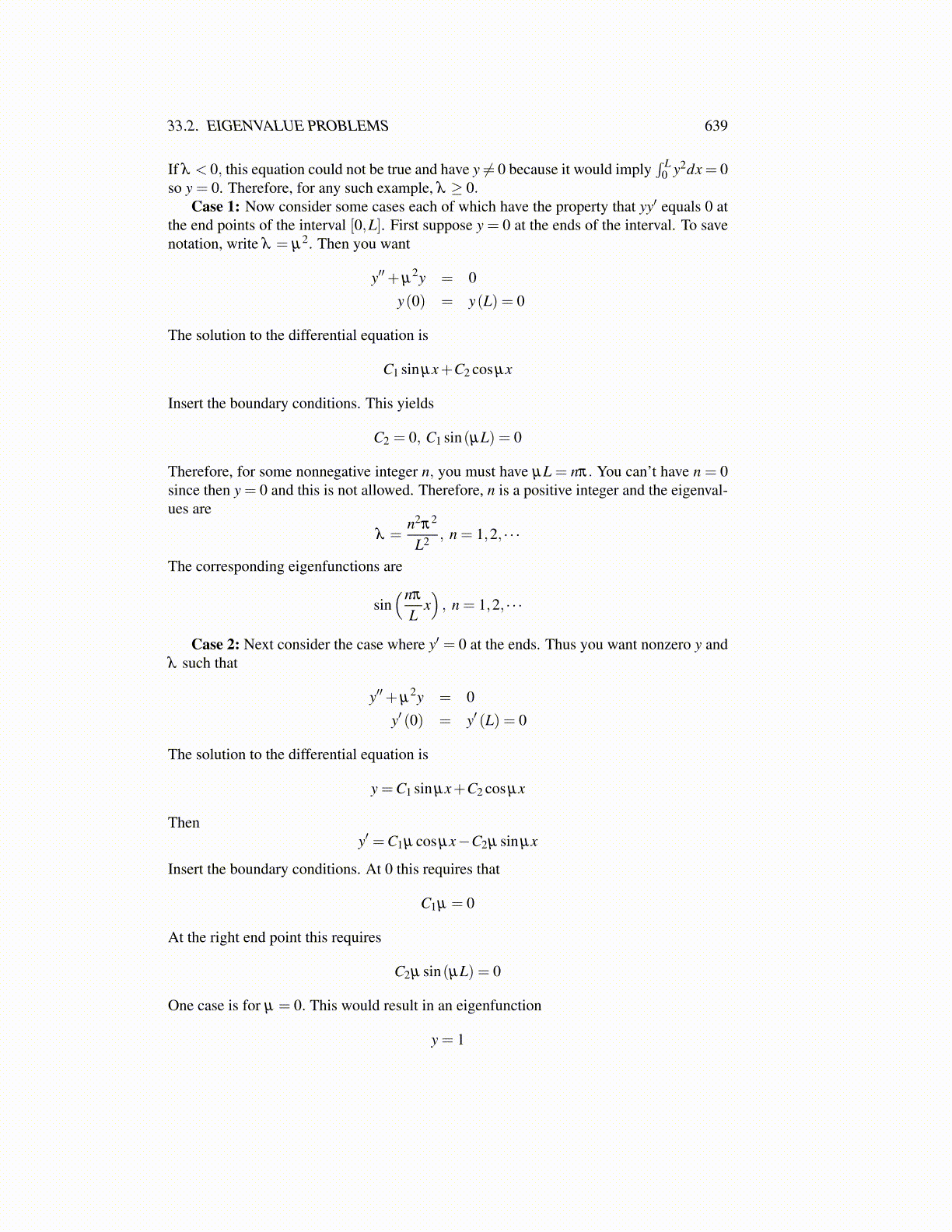
33.2. EIGENVALUE PROBLEMS 639
If λ < 0, this equation could not be true and have y ̸= 0 because it would imply∫ L
0 y2dx = 0so y = 0. Therefore, for any such example, λ ≥ 0.
Case 1: Now consider some cases each of which have the property that yy′ equals 0 atthe end points of the interval [0,L]. First suppose y = 0 at the ends of the interval. To savenotation, write λ = µ2. Then you want
y′′+µ2y = 0
y(0) = y(L) = 0
The solution to the differential equation is
C1 sin µx+C2 cos µx
Insert the boundary conditions. This yields
C2 = 0, C1 sin(µL) = 0
Therefore, for some nonnegative integer n, you must have µL = nπ. You can’t have n = 0since then y = 0 and this is not allowed. Therefore, n is a positive integer and the eigenval-ues are
λ =n2π2
L2 , n = 1,2, · · ·
The corresponding eigenfunctions are
sin(nπ
Lx), n = 1,2, · · ·
Case 2: Next consider the case where y′ = 0 at the ends. Thus you want nonzero y andλ such that
y′′+µ2y = 0
y′ (0) = y′ (L) = 0
The solution to the differential equation is
y =C1 sin µx+C2 cos µx
Theny′ =C1µ cos µx−C2µ sin µx
Insert the boundary conditions. At 0 this requires that
C1µ = 0
At the right end point this requires
C2µ sin(µL) = 0
One case is for µ = 0. This would result in an eigenfunction
y = 1